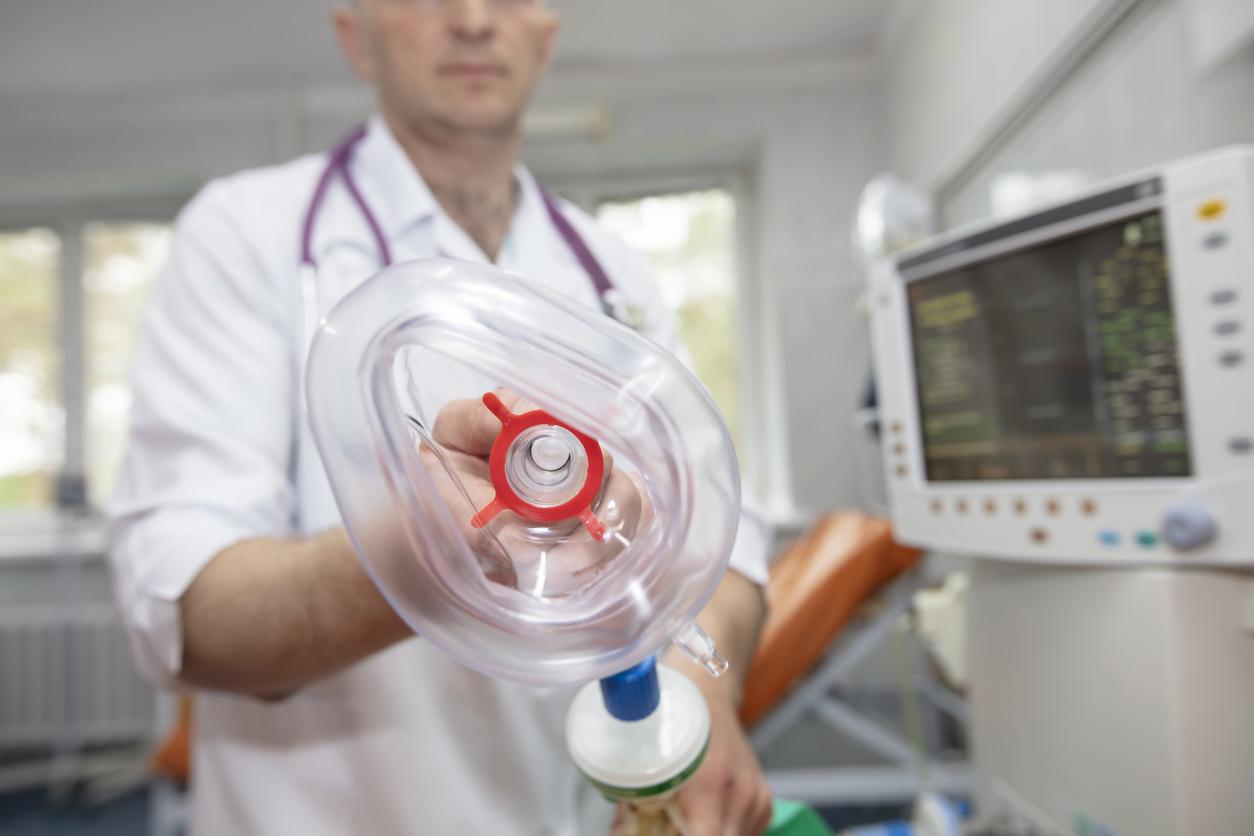A new study based on outcomes seen at European intensive care units (ICUs) suggests higher is not better when it comes to targets for supplemental oxygenation levels for COVID-19 patients experiencing low oxygen, or hypoxia.
The study is published today in JAMA, and looked at Pao2, the partial pressure of oxygen in the arterial blood, at supplemental levels of 60 and 90 millimeters of mercury (mm Hg), with the main outcomes being number of days alive without life support.
Lower risk of death in lower-oxygen group
The study included 726 adults with COVID-19 receiving at least 10 liters per minute (L/min) of oxygen or mechanical ventilation in 11 ICUs in Europe from August 2020 to March 2023. ICUs in Denmark, Switzerland, Norway, Iceland, and Wales participated in the trial.
Hypoxemic respiratory failure was defined as necessitating supplemental oxygen of at least 10 L/min in an open system or mechanical ventilatory support.
Patients were randomized 1:1 to receive either 60 mm Hg (lower-oxygenation group, 365) or 90 mm Hg (higher-oxygenation group, 361) and followed for 90 days. Oxygen levels were measured via arterial lines, which were place on all patients.
Sixty-eight percent of patients were men, and average patient age was 66 years.
At 90 days, the median time alive without life support was 80.0 days in the lower-oxygenation group and 72.0 days in the higher-oxygenation group. Death rate at 90 days was 30.2% in the lower-oxygenation group and 34.7% in the higher-oxygenation group (risk ratio, 0.86; 98.6% confidence interval, 0.66 to 1.13).
"The present result was hypothesized to occur due to more days alive without mechanical ventilation in the lower oxygenation group vs the higher oxygenation group," the authors wrote.
High oxygen may solve 1 problem, cause others
In an editorial on the study, Richard M. Schwartzstein, MD, of Harvard Medical School, writes that the less-is-more findings could be explained by a number of factors. More patients in the high-target group could have been intubated and started on mechanical ventilation because physicians could not achieve the target with noninvasive ventilation.
"The observation that initiation of mechanical ventilation to achieve a high target Pao2 may have occurred is less a failing of the study design than a consequence of using a high Pao2 target," Schwartzstein writes.
The observation that initiation of mechanical ventilation to achieve a high target Pao2 may have occurred is less a failing of the study design than a consequence of using a high Pao2 target.
Schwartzstein also suggests that high oxygen targets help patients in some ways, but may also cause inflammation, bronchial epithelial injury, and disruption of mitochondrial respiration in ICU patients.
He writes that the study "is one more piece in a growing collection of evidence suggesting that there is no clinical benefit and possibly harm associated with use of supplemental oxygen to achieve oxygen saturation of the blood beyond 90% to 93%."












